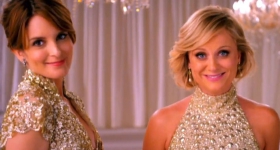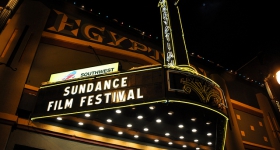(Photo Courtesy of Warner Bros. Pictures)
I’m not one of those huge Harry Potter geeks who dons a graduation gown, round coke-bottle glasses and a yellow and red scarf to opening nights -- but I know a few people my age who still do. Amongst those true Potter fans, I’m ashamed to admit that my interest was first piqued in 2001 with the release of the first Harry Potter film, The Sorcerer’s Stone.
At the time, I was 14, a late bloomer to J.K. Rowling’s book series, compared to others in my generation. But since that first film, I’ve read all of the books -- several times. And I’ve seen all the movies at least twice.
Harry Potter captured my imagination, and my generation’s, even as we moved into college and beyond. I grew up, and then I watched these characters on screen grow up.
The Harry Potter franchise grew, too. Between the time Rowling first published The Sorcerer’s Stone in 1997 and closed the book on the 759th page of Harry Potter and the Deathly Hallows ten years later, five of her seven books already had a silver-screen companion. Earlier this year, and two films later, Universal Studios in Orlando, FL, opened the gates to an amusement park themed after the “wizarding world” Rowling created -- which received stellar turnout in spite of a “staycation” economy.
Today’s cinematic release of Harry Potter and the Deathly Hallows signals the open of the close: it’s the first half of the seventh and final installment of the series.
The end is bittersweet.
The film picks up a few months after the emotional conclusion of The Half-Blood Prince. Following the death of a dear friend, Harry Potter (Daniel Radcliffe) and his BFFs Ron (Rupert Grint) and Hermoine (Emma Watson) are on the run, fugitives wanted by a brainwashed military state and of course, by the minions of Harry’s murdering archenemy, Voldemort.
Absent are the perpetual dining hall feasts, flashy Quidditch banners and plush armchairs of Gryffindor’s common room. Harry cannot return to Hogwarts, or risk arrest, persecution and death. Instead, the heroic trio travel to remote, beautiful locations while attempting to destroy remaining Horcruxes, the cursed items that contain a part of Voldemort’s corrupted soul -- and to help keep the dark lord from death.
J.K. Rowling’s literary prowess is formidable, especially as a children’s novelist. In the film, David Yates’ directorial decisions take her classic themes -- family, friendship, betrayal and loss, the hero’s journey, the coming of age, good vs. evil -- a step further. It’s not so much that Yates has turned the series even darker and deeper, though that's how the plot progression in the books is often described. Rather, Yates adds a heavier angle to the story.
The film takes on a life of its own: this time it’s more reminiscent of a war film.
There’s reference to historical themes: of racial and religious discrimination. These are real-world issues jarring against Harry Potter’s fantastical backdrop.
While Harry Potter's world is very British, it's not completely whitewashed like a certain young-adult series terribly popular amongst tween girls. The Asian British population is not forgotten: To the delight of many an Asian American fan, Harry's first crush is Cho Chang. Harry and Ron also double-date South Asian twins, Padma and Parvati Patil.
Meanwhile, the culture of wizards is full of prejudice and its own brand of racial friction. Hogwarts Headmaster Dumbledore commonly befriends non-humans like goblins, centaurs and giants, whom many wizards relegate to slave or animal status. In Harry Potter and the Goblet of Fire, Harry and Hermione come to champion labor reform for house elves, the oft-abused and always unpaid household servants.
And of course, Voldemort is in many ways a Hitler-esque figure, a manifestation of racial hatred incarnate. He's power-hungry and built his Death-Eater army on the understanding that they are the pureblood, master race of wizards. Those who did not descend from other wizards or who sympathize with non-magical "muggles" are derogatorily called "mudbloods" or "blood traitors."
In their quest, Harry and company liberate political prisoners, and witness the production of anti-muggle propoganda.
There are witch-hunts, so to speak: one woman is accused of not being a witch -- a devastating allegation in a sociey that treats muggles and non-pureblood wizards as second-class citizens.
The governing Ministry of Magic is falling to pieces, policed by stern-faced men dressed in uniforms that are reminiscent of Nazi SS garb.
Yates builds upon Rowling’s themes, and draws upon those real-life connections that give the Potter series its true power.
Harry Potter’s coming-of-age theme resonated with my generation as we grew up. Now, the age-old pattern of human cruelty and violence echoed in the film evokes real feelings of outrage and disbelief -- feelings that rarely come from the typical young-adult novel or a blockbuster film franchise. But Harry Potter is so much more than simply a book series. It's a modern classic.
Part 1 of Harry Potter and the Deadly Hallows is in theaters now. Part 2 will be released July 15, 2011.









Comments